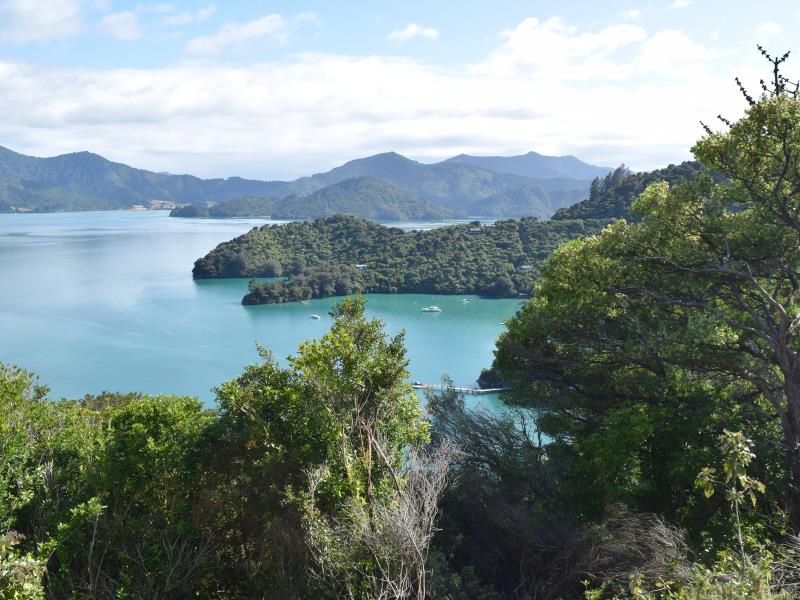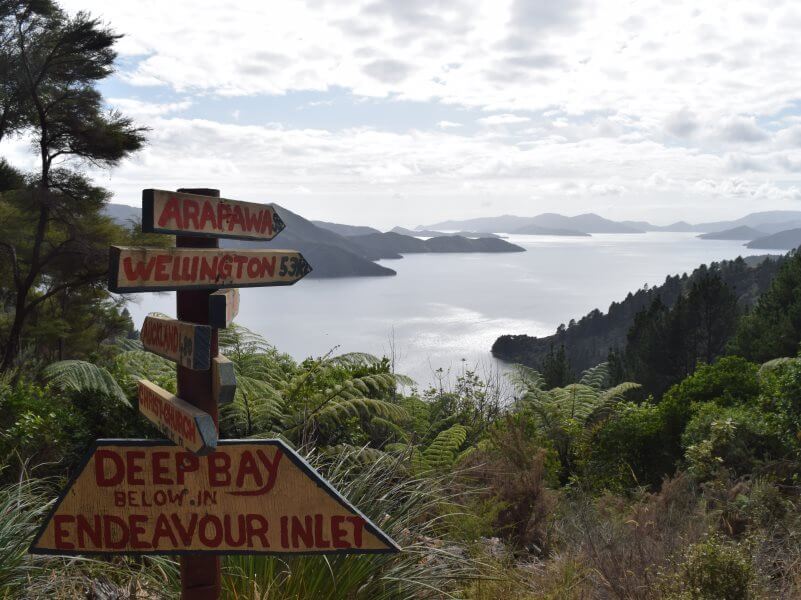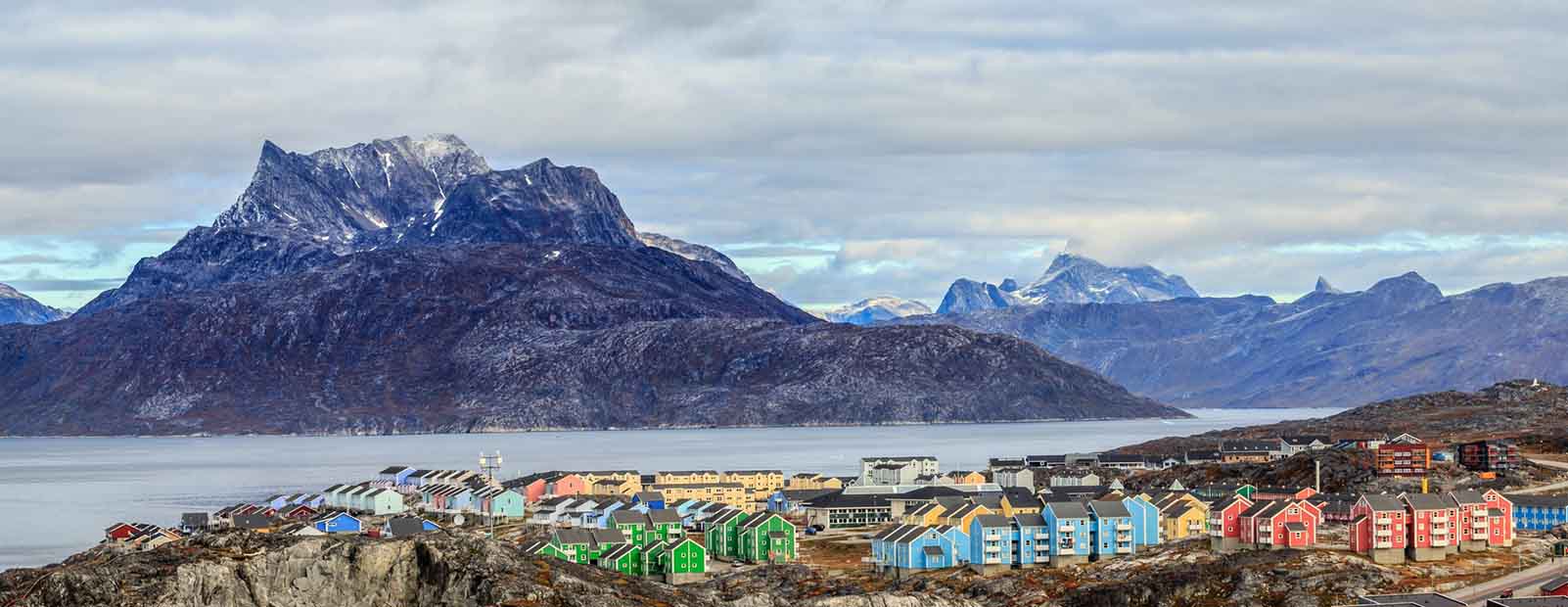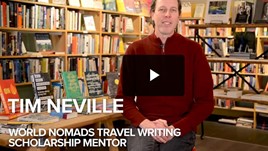
By Helen Glenny
Travel Writer14 Jun 2020 - 6 Minute Read
It’s just after midday, and I’m sauntering, unencumbered, across a long, exposed ridgeline. The dusty Queen Charlotte Track stretches out ahead of me, tracing an undulating path along a crooked, narrow finger of land that juts from the top of New Zealand’s South Island, part of the labyrinthine Marlborough Sounds. On my left, the land drops down to a convoluted coastline, the sea deep blue and glittering. It’s speckled with boats – one of them carries my backpack, loaded with a tent, food, and warm clothes for the evening; it will meet me that afternoon at camp. Being without it, for the first time in eight months, is heaven.
My partner and I had been traveling for almost a year, traipsing from the rocky Irish coastline to the lush bush of northern New Zealand. We were in a period of freedom that wouldn’t last – we imagined mortgages, committing careers, and children would be in our near future – and we were determined to eke out every experience we could. But after eight months, that approach felt unsustainable. We’d pushed on through winding scenic drives and long, arduous mountain hikes, but often come away from these adventures exhausted, unable to decide whether the effort was worth the experience.
We came up with a name for this: travel fatigue. We found ourselves completely unable to re-energize on the road – cooking comfort food in hostel kitchens and napping in tents couldn’t replace the familiarity of home. We tried getting a hut for a week during a torrential rainstorm; he painted watercolors and I tried to write, but all we created was a very literal version of cabin fever.
So, when friends invited us to do the 44mi (71km), four-day Queen Charlotte Track, my partner gave an exhausted sigh. He called a friend who was traveling near us, and made plans to hang out at a vineyard instead. But I was tempted; walking had always felt restorative to me, and the Queen Charlotte was different from most New Zealand hikes.

Rather than hoisting heavy packs onto our backs each morning, our gear would be transported by boat. Instead of consistent eight-hour days, we could break up the walk as we wanted, allowing time to swim, sunbathe, and sneak into the track’s luxury lodges for drinks in the evenings. It could be a way to get some mental energy back, while still getting the most out of the time I had.
* * * * *
The track starts at Meretoto/Ship Cove – a historically significant place of rest. Long valued by Maori as a shelter at the edge of the open sea, it was also Captain James Cook’s base while he mapped New Zealand. He spent 170 days here in the 1770s, catching fresh fish and hunting the fat, flightless birds that scurry about in the grass.
We leave the birds alone and walk up from the bay, dropping over a bushy ridgeline and into Endeavour Inlet, where we spend the afternoon walking next to the water. At the end of the day, we swim from our campsite to a long jetty, where we rest, the wood warm against our backs.
Traveling is littered with decision-making. Over the past eight months, those daily micro-decisions had worn me down. But the Queen Charlotte gives me a break.
Traveling is littered with decision-making – inland or coast, campsite or hostel, stay here or move on? Over the past eight months, those daily micro-decisions had worn me down. But the Queen Charlotte gives me a break; we walk the only track, stay in the only campsite, and cook the meal we’ve planned. As I chop vegetables, I can feel the rigidity escaping my shoulders.
* * * * *
We have one long day of walking: eight hours, rising and falling along the spine of a hilly peninsula. It’s hot and dusty in a few exposed spots, but for the most part we walk through dense bush that creaks deafeningly with cicada song, the insects at their loudest over summer. For months, I’ve been ruminating: my travels are finishing soon, so what then? What city should I live in? Where should I work? But in that moment, in the bush, my noisy thoughts are finally drowned out.
I’d recently read that the area of the brain called the amygdala is thought to be the part that processes worry, and it’s heavily involved in decision-making. Thankfully, it’s terrible at multi-tasking. Walking takes up the amygdala’s attention, so I’d been hoping the hike would dampen the anxiety I was feeling around these big decisions.
At the end of the day, we arrive at camp – hot, sweaty, and physically exhausted, ready to collapse into the sea once more. But mentally, my mind feels relaxed, even dormant. With my amygdala amused, I’m happy to enjoy not thinking, just for a while.

Weeks before, I’d been on the phone with my friends, planning this trip.
“So, the last day,” one said. “We’ve got two options – walk the last 12.5 miles (20 kms) of the track and take a boat home from Anakiwa, or cut the track short and take a boat from Waterfall Bay, just over the hill.”
I’m a goal-oriented person, and normally, I’d be all-in to finish the track. Who knows what you might miss if you skip a bit? And what about the sense of satisfaction gained from completing a goal? But, on this trip, I was trying, against all my instincts, to give myself a break. “Waterfall Bay,” I said, decisively. “We’ll spend the morning swimming.”
Half the group agreed. So, on the last day, we split up. I wave to the energetic bunch as they set off just as the sun is rising, doubting my decision, wondering what I’ll be missing. My lazy bunch then does as we predicted: we have a long breakfast before sauntering over to Waterfall Bay, towels draped around our necks.
Waterfall Bay is a deep cove, with floating jetties poking out from all sides, rising and falling with the tides. We’re there an hour before our boat is due, and spent our spare time diving into the warm, clear water, its depths expanding below us. We keep an eye out for dolphins – they’re common in the Queen Charlotte Sound – but have to settle for ducks and seagulls. And you know what? I couldn’t be happier. Making the most of every day is an admirable goal, but today, I’m perfectly content taking it easy.
Discover similar stories in
transformation
Travel Writer
Originally from New Zealand, now living and working in Brighton, UK, Helen was a 2017 World Nomads Travel Writing Scholarship Winner.




2 Comments
I was going to delete this email but got a feeling I should not. Glad I read the story about trial and error and how to deal with travel fatigue. Great how she didn't let ambition overtake her body's need to take it easy and learn something new. Enjoyable story.
I enjoyed your story! Planning a trip and seeing everything you planned can be exciting and exhausting!